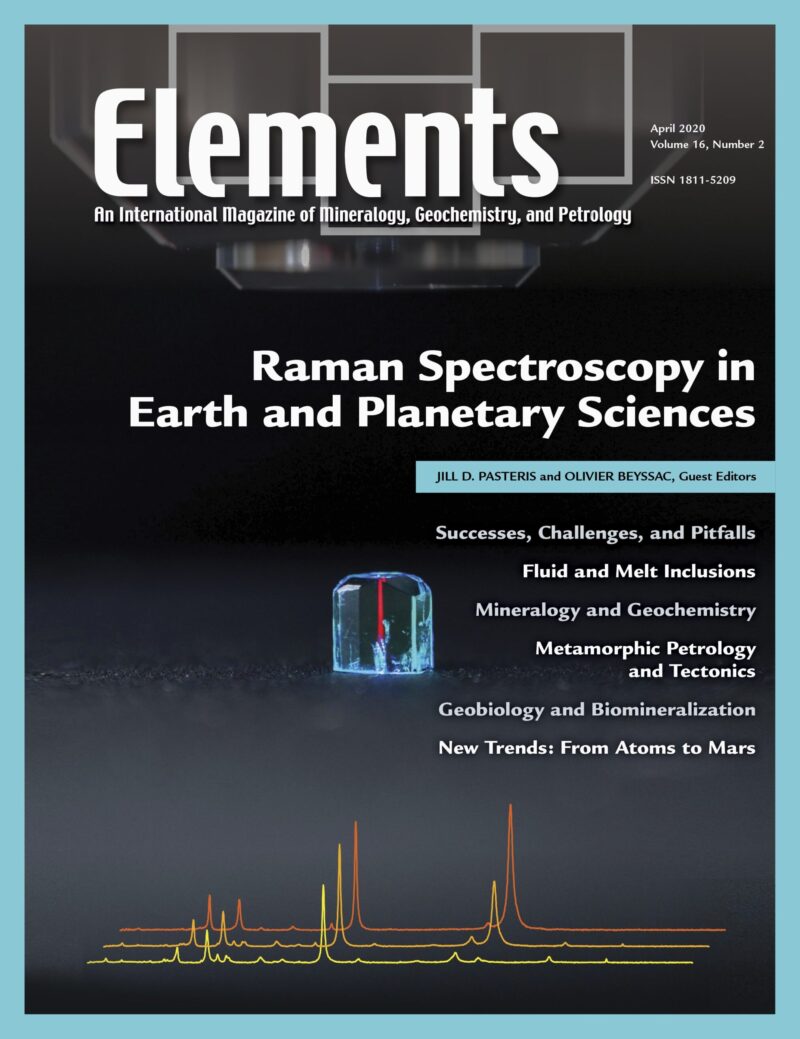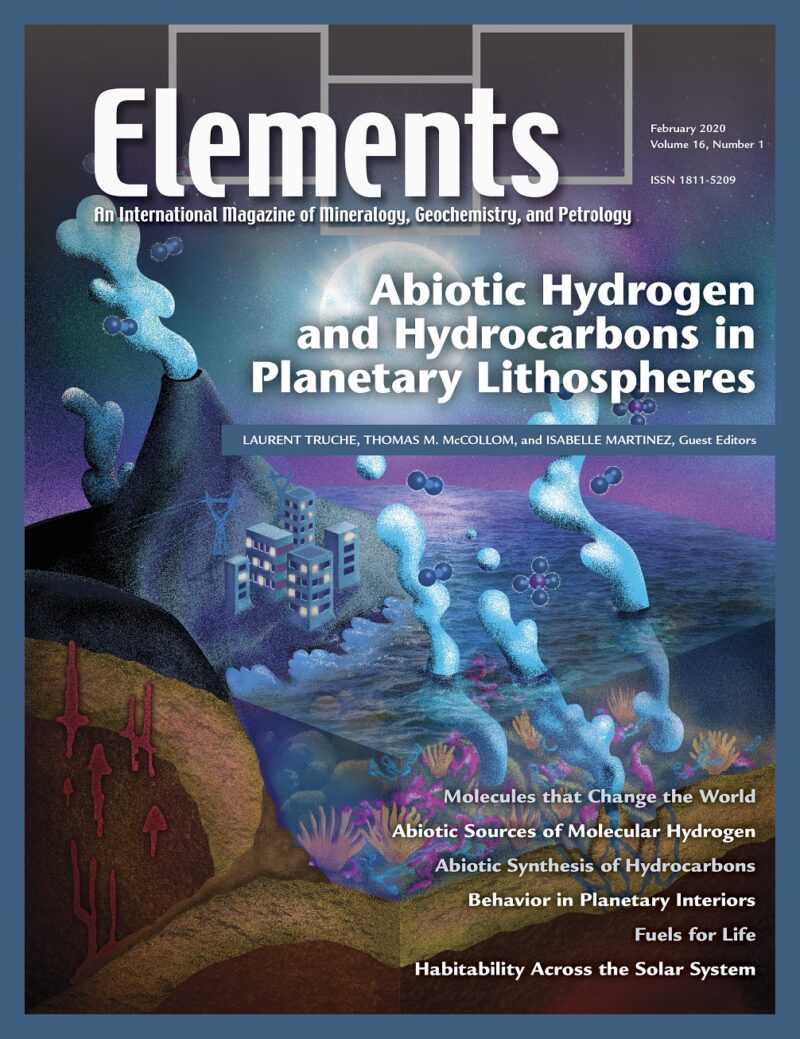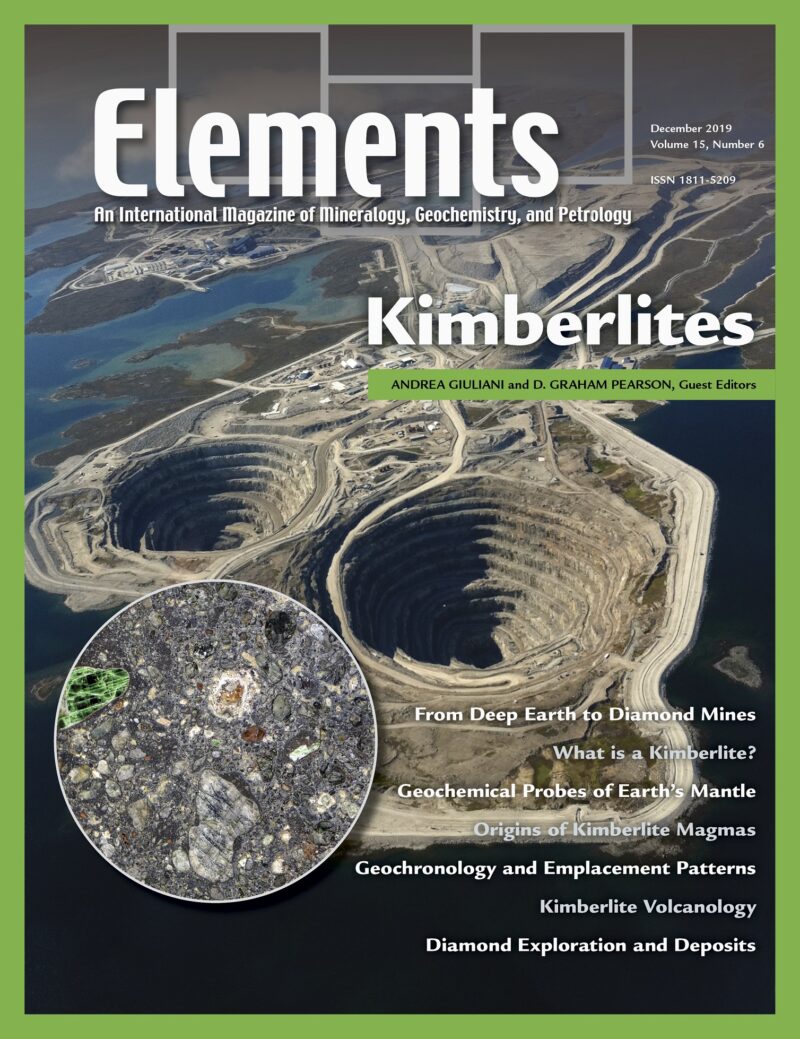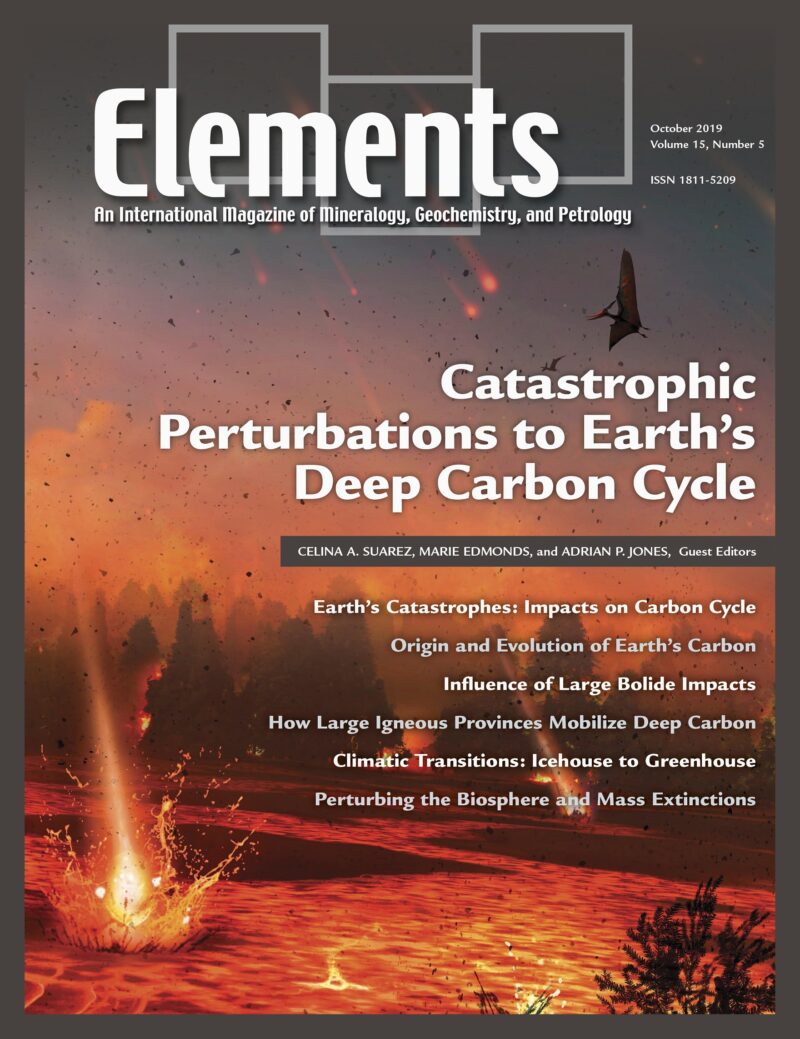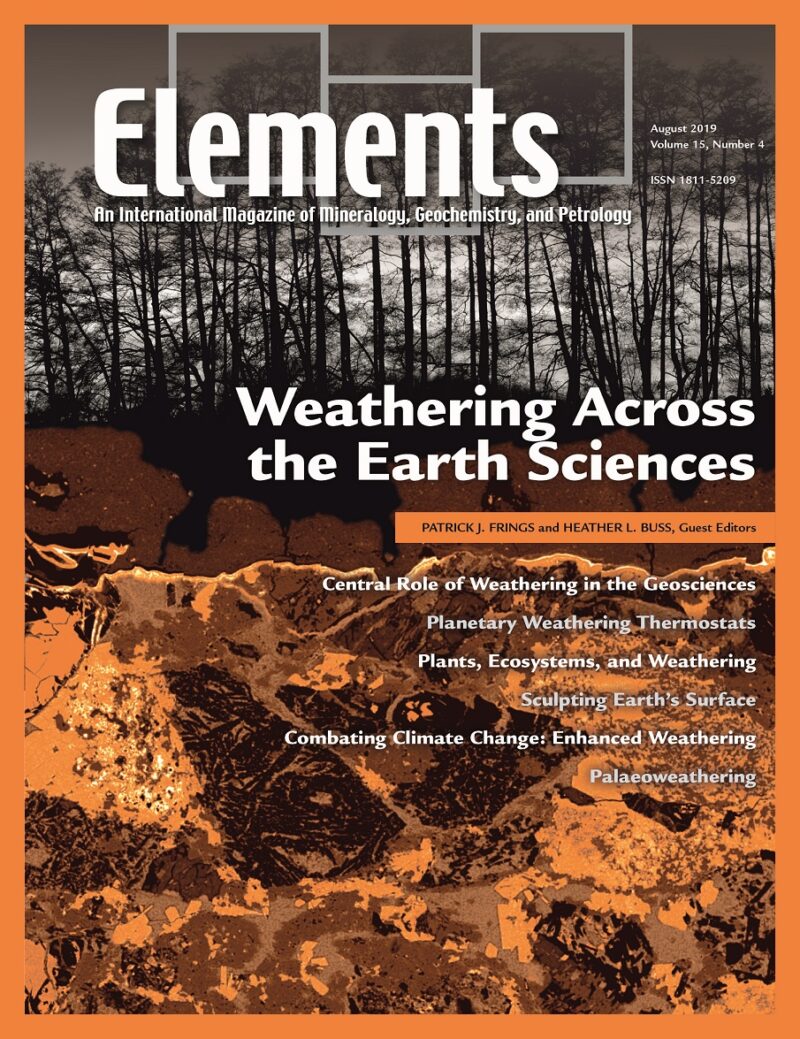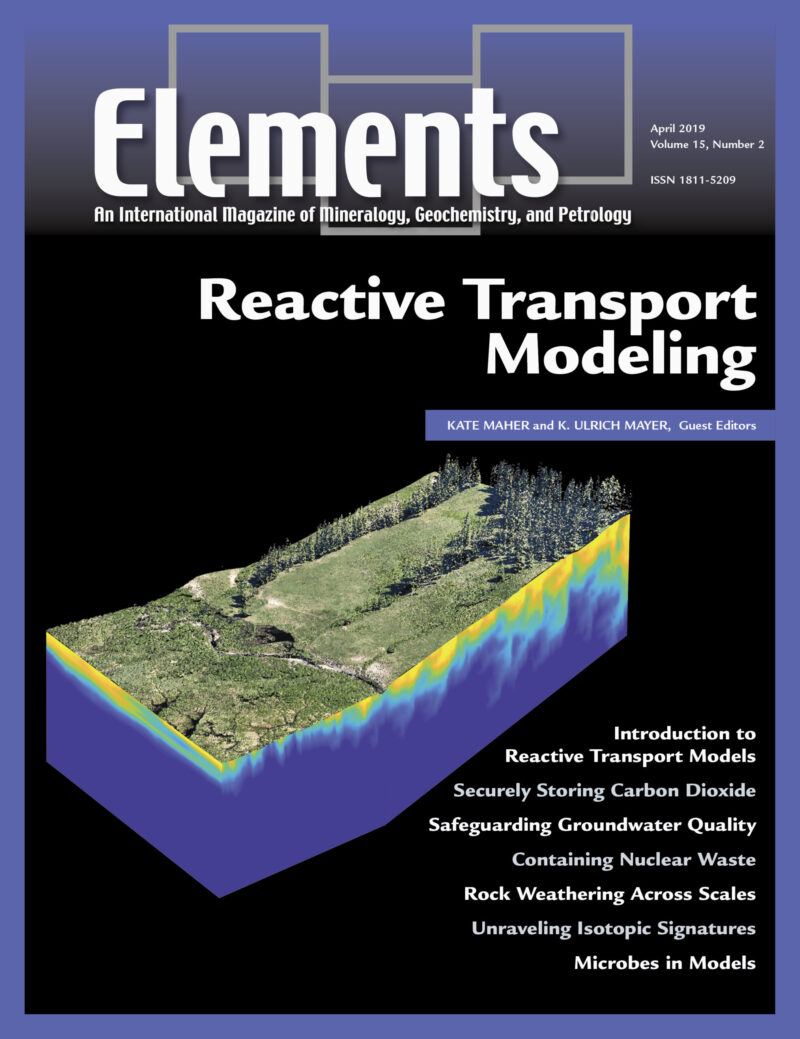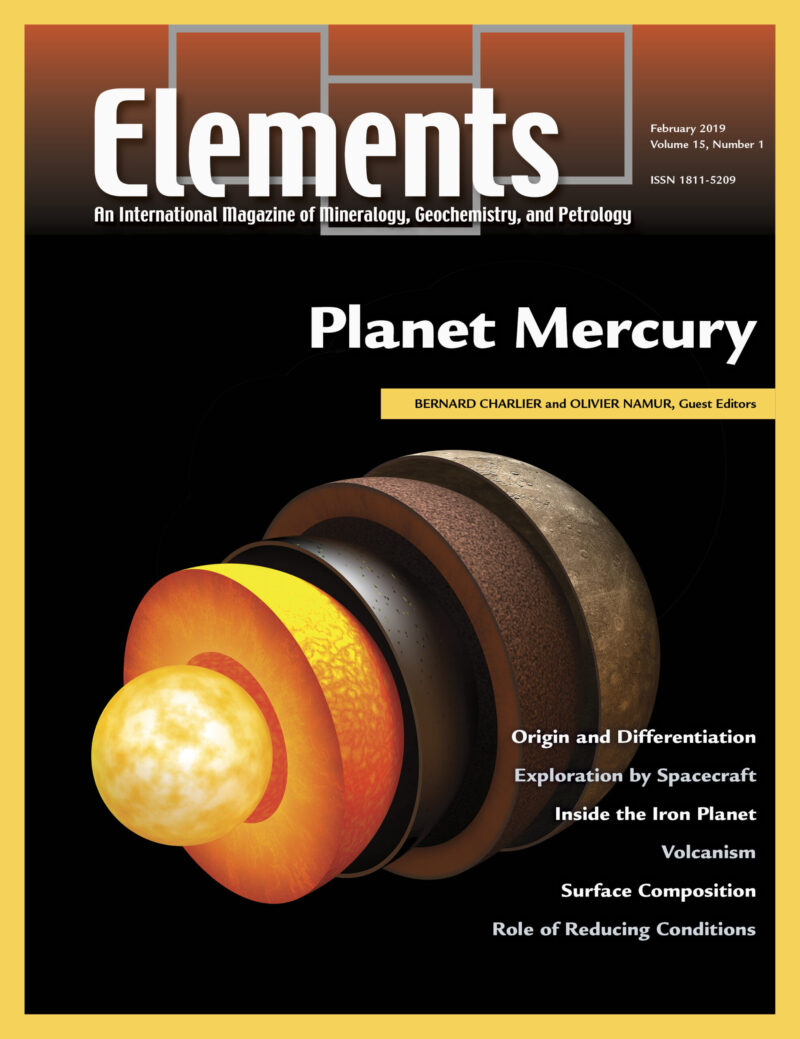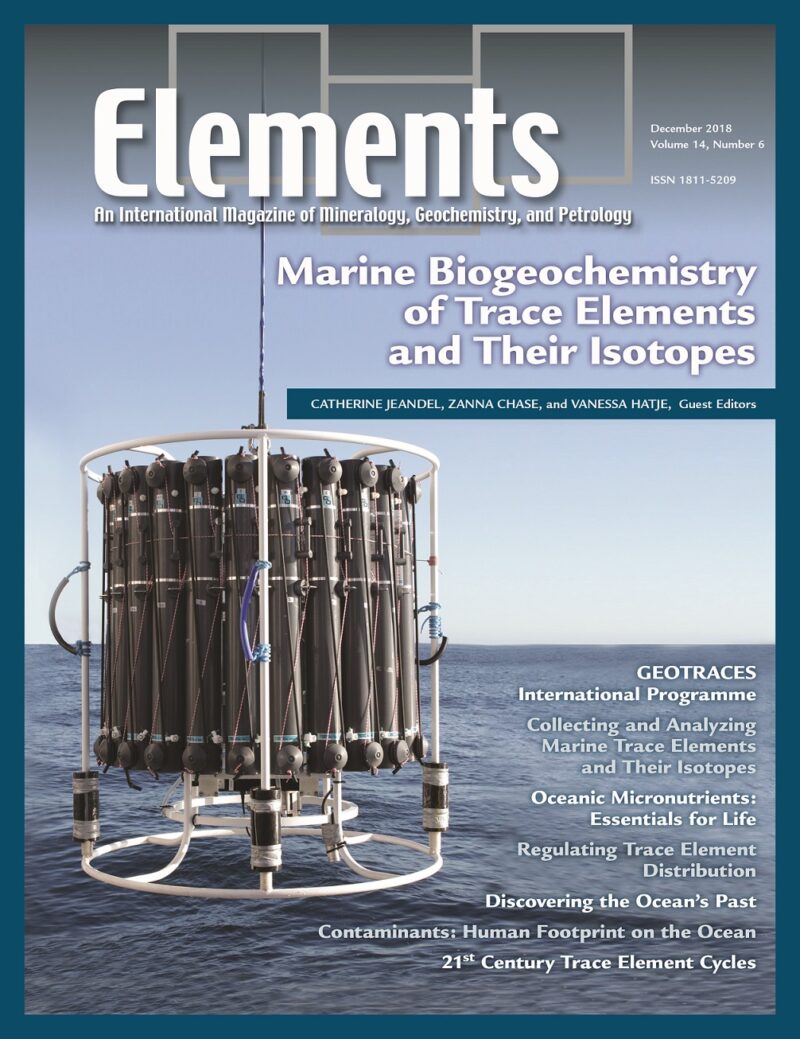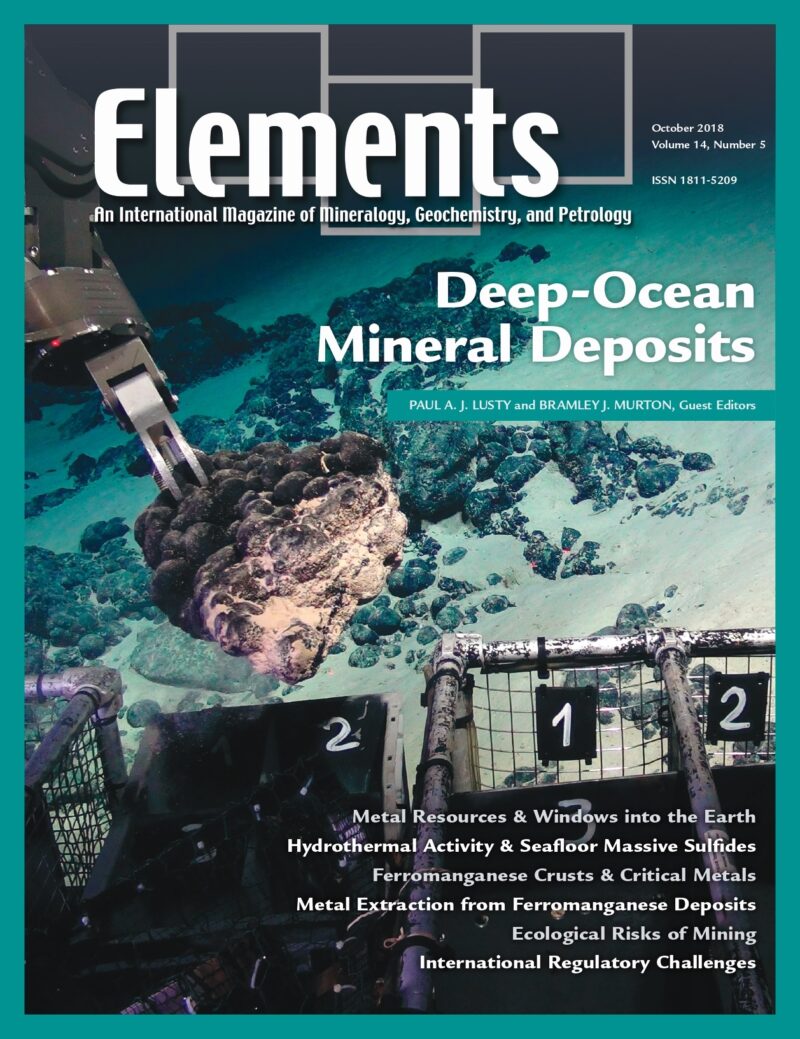-
Raman Spectroscopy In The Earth And Planetary Sciences, April 2020, Vol. 16, No. 2
$20.00The application of Raman (microprobe) spectroscopy in the geosciences has rapidly broadened and deepened over the past 40 years. This has been sparked by both improvements in technology and recognition of the quantitative, as well as qualitative, capabilities of the technique.
-
Abiotic Hydrogen And Hydrocarbons In Planetary Lithospheres, February 2020, Vol. 16, No. 1
$20.00Molecular hydrogen (H2), methane, and hydrocarbons with an apparent abiotic origin have been observed in a variety of geologic settings, including serpentinized ultramafic rocks, submarine hydrothermal vents, and deep fractures within ancient cratons. Recent discoveries have reported the presence of hydrogen emanating from the icy crust of Saturn’s moon Enceladus, and methane in the atmosphere of Mars.
-
Kimberlites, December 2019, Vol. 15, No. 6
$20.00Kimberlites are the most deeply derived of all volcanic rocks, as well as the host rock for most of the world’s diamond mines. Kimberlites, therefore, provide unique snap-shots of magma genesis and mantle evolution in the deep Earth well into the diamond stability field (>150 km and, potentially, >700 km).
-
Catastrophic Pertubations To Earth’s Deep Carbon Cycle, October 2019, Vol. 15, No. 5
$20.00Carbon is one of the most important elements on Earth. It is the basis of all life on the planet, is stored and mobilized throughout the Earth from core to crust, and is the basis of the energy sources that are so important to human civilization.
-
Weathering Across The Earth Sciences, August 2019, Vol. 15, No. 4
$20.00This issue highlights the integral role of weathering processes across a range of geoscience fields. Chemical weathering – the loss of mass by mineral dissolution and export – is key to understanding how Earth’s skin functions.
-
South Aegean Volcanic Arc, June 2019, Vol. 15, No. 3
$20.00The South Aegean Volcanic Arc lies at the intersection between Europe, Asia, and Africa, in the cradle of European civilization. Studies over the last decade have transformed our understanding of the arc: subduction architecture and back-arc geodynamics, genesis of the arc magmas, eruption chronology of the arc recorded in marine tephra archives, and hazards posed by eruptions and tsunamis.
-
Reactive Transport Modeling, April 2019, Vol. 15, No. 2
$20.00Reactive transport modeling, or computer simulations of the transfer of mass and energy through the subsurface, has become a central tool for understanding how Earth’s unique chemical environments are formed, how they function today, and how they might behave in the future. This process-based approach has enabled us to gain a new understanding of a diverse array of Earth processes, from biogeochemical cycles in marine sediments and the factors that control soil formation, to the evolution of contaminated groundwater systems and the engineered containment of nuclear waste.
-
Planet Mercury, February 2019, Vol. 15, No. 1
$20.00Mercury is unique amongst terrestrial planets because of its very high metal/ silicate ratio. The NASA MESSENGER mission ended in 2015 and significantly advanced our understanding of the deep structure of the planet as well as our comprehension of Mercury’s volcanic history and crust formation.
-
Marine Biogeochemistry Of Trace Elements And Their Isotopes, December 2018, Vol. 14, No. 6
$20.00The field of marine geochemistry is exploding these last two decades. During the 1980s and 1990s, the scientific community developed a geochemical toolbox to study key ocean processes, based on the concentration and isotopic composition of trace elements.
-
Deep-Ocean Mineral Deposits, October 2018, Vol. 14, No. 5
$20.00Significant deposits of metal-rich minerals are known to exist on the deep-ocean floor, in some instances exceeding global land-based resources. In recent years, advances in understanding and technology coupled with an evolving regulatory regime have resulted in growing interest in mining these deposits.
-
Central Andes: Mountains, Magmas, And Minerals, August 2018, Vol. 14, No. 4
$20.00The Central Andes in South America are a first-order geological structure on our planet of an active continental margin. The link between subduction-related magmatism and processes and timing of uplift and volcanism shaped the Andean Cordillera and provides unique examples of the andesite magma generation during passage through thickened crust.
-
Terroir – Science Related To Grape And Wine Quality, June 2018, Vol. 14, No. 3
$20.00This special issue explores the physical environment that shapes the character and quality of wine, ranging from geology and soils to viticulture and climate. It also discusses some of the technological advances such as drones, remote sensing, and precision agriculture, that are revolutionizing the production of fine wine.

